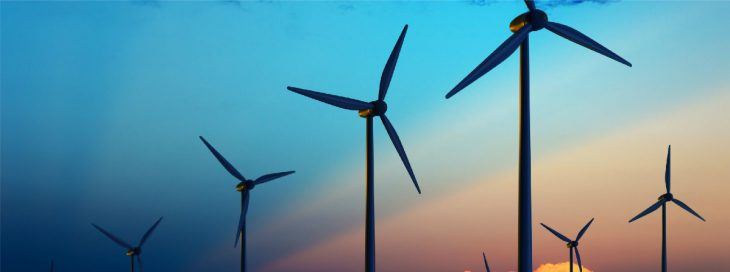Energy In-depth: Wind power now largest renewable energy source, coal poised for small rebound
by February 10, 2017 7:33 am 494 views

Energy in-depth is a roundup of energy-related news.
WIND POWER NOW LARGEST RENEWABLE ENERGY SOURCE, EXPECTED TO REACH 10% OF U.S. ELECTRICITY OUTPUT BY 2020
Wind is now the largest renewable energy resource by installed generating capacity, surpassing hydropower dams and moving into the fourth spot as the largest overall energy source, according to a new report released Thursday (Feb. 9) by the American Wind Energy Association (AWEA). At the close of 2016, the American wind fleet totaled 82,183 MW, enough to power 24 million average American homes. And with the addition of North Carolina’s first utility-scale wind farm announced earlier this week, there are now more than 52,000 individual wind turbines in 41 states plus Guam and Puerto Rico.
Nationwide, American wind power is on track to double output over the next five years, and supply 10% of U.S. electricity by 2020, AWEA said. New growth in the fourth quarter of 2016, announced for the first time this week, includes 6,478 MW, the second strongest quarter for U.S. wind power installations on record. For the year, wind developers added 8,203 MW of wind power capacity representing more than $13.8 billion in new investment.
With 99 percent of wind projects located in rural areas, much of this investment is flowing to communities that need it most. Over 100,000 American workers now manufacture, construct, and maintain the U.S. wind turbine fleet according to the U.S. Department of Energy. In total, wind supports more American jobs than nuclear, natural gas, coal, or hydroelectric power plants. To view the report, click here.
COAL PRICES, PRODUCTION TO RISE IN NEXT TWO YEARS
Despite rising natural gas prices in the near-term, coal is expected to regain some share of the electricity generation mix, and coal production is expected to increase slightly in 2017 and 2018, the EIA said Wednesday (Feb. 8). Coal production in the U.S. totaled 739 million short tons (MMst) in 2016, an 18% decline from 2015 and the lowest level of coal production since 1978. Because nearly all coal produced in U.S. is used to generate electricity, coal production and coal-fired electricity generation are closely connected.
The past decline in coal production has not been uniform across the three major coal-producing regions in the United States. Production declines in the Western region, which includes the Powder River Basin that spans parts of Wyoming and Montana, have been similar to the overall U.S. production, falling 36% since 2008, nearly equal to the 37% decline nationally. Production declines in the Appalachian region have been more pronounced, falling by 53% since 2008. The Interior region, which includes the Illinois Basin, increased by 2% from 2008 to 2016. Similarly, the expected increase in coal production through 2018 also varies across regions.
BHP TO SPEND $2.2 BILLION IN GULF OF MEXICO ‘MAD DOG’ DEEPWATER PROJECT
BHP Billiton, which has halted all drilling and new investment in the Fayetteville Shale, announced Thursday (Feb. 9) that it will spend $2.2 billion for its share of the development of the Mad Dog Phase 2 project in the Gulf of Mexico. BHP Billiton holds a 23.9% stake in the Mad Dog field. BP, the operator, holds a 60.5% participating interest, and Union Oil Company of California, an affiliate of Chevron USA, holds the remaining 15.6% interest. During the fourth quarter of 2016, BP sanctioned the Mad Dog Phase 2 project.
BP in early December said it has sanctioned the $9 billion deepwater Mad Dog Phase 2 project in the Gulf of Mexico, highlighting the company’s long-term commitment to the U.S. offshore development despite the current low oil price environment. Mad Dog Phase 2, which BP discovered in 1998, will include a new floating production platform with the capacity to produce up to 140,000 gross barrels of crude oil per day from up to 14 production wells. Oil production is expected to begin in late 2021. The second Mad Dog platform will be moored approximately six miles to the southwest of the existing Mad Dog platform, which is located in 4,500 feet of water about 190 miles south of New Orleans.
SENATE COMMITTEE OK’S BILL TO ALLOW GAS UTILITIES TO RECOUP INVESTMENT COSTS EARLIER
Arkansas’ natural gas utilities won’t have to wait until a rate case filing before the state Public Service Commission to recoup investments on proposed infrastructure projects that benefit all classes of ratepayers, according to a bill approved by a Senate Panel on Thursday. In a brief hearing before the Senate Committee on Agriculture, Forestry and Economic Development, lawmakers unanimously approved Senate Bill 265 as officials from the state’s three natural utilities – CenterPoint Energy, Black Hills Energy and Arkansas Oklahoma Gas – looked on. Read more here.
